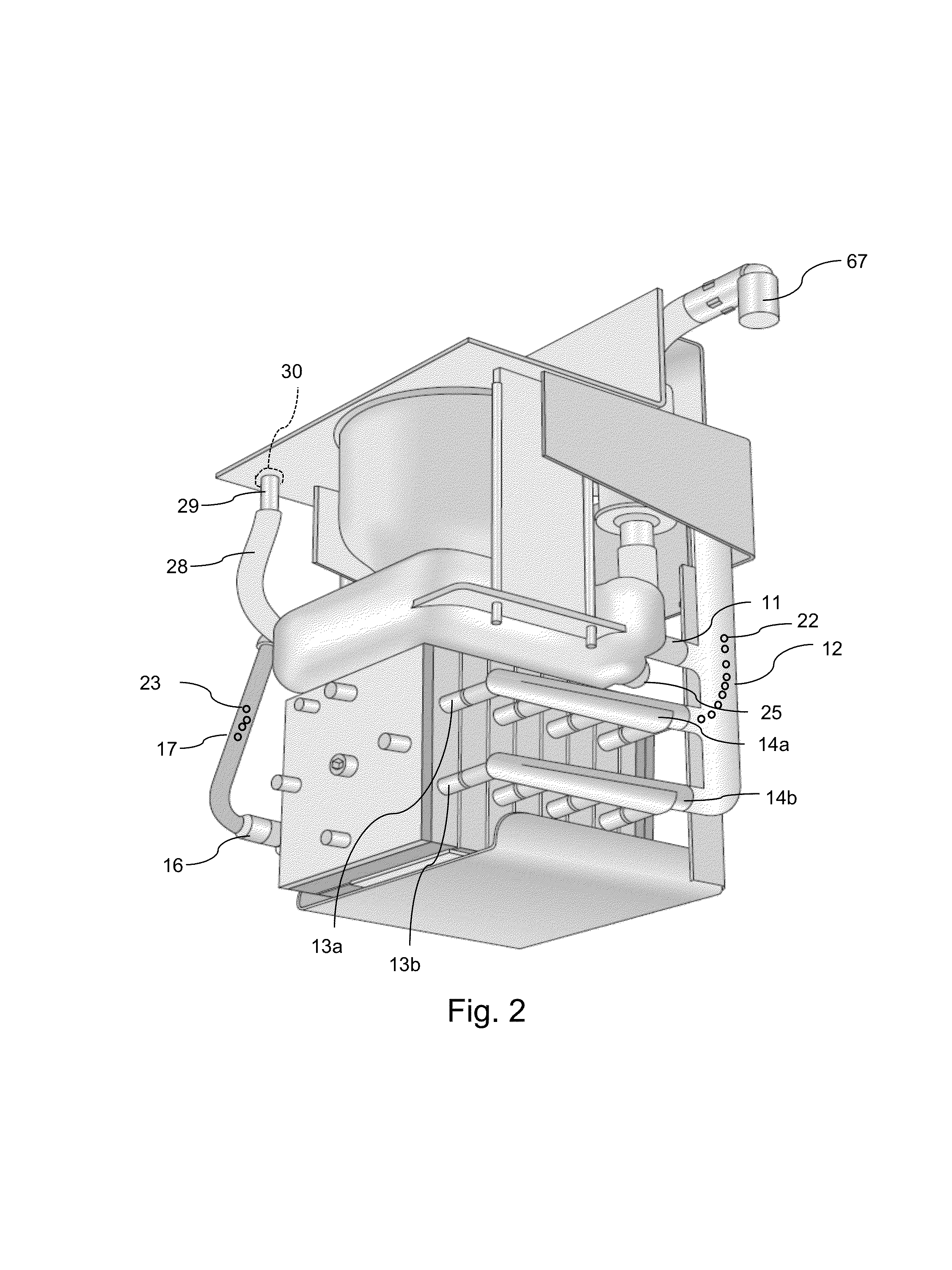Hydrogen Supplemental System for On-Demand Hydrogen Generation for Internal Combustion Engines
a technology of hydrogen generation and supplemental system, which is applied in the direction of machines/engines, energy input, greenhouse gas reduction, etc., can solve the problems of reducing the efficiency of fuel efficiency, and reducing fuel efficiency, etc., and achieves the effect of wasting heat or solar energy
- Summary
- Abstract
- Description
- Claims
- Application Information
AI Technical Summary
Benefits of technology
Problems solved by technology
Method used
Image
Examples
Embodiment Construction
[0022]The present invention as will be described in greater detail below provides an apparatus, method and system, particularly, for example, a hydrogen supplemental system used to increase the fuel efficiency and reduce carbon emissions for internal combustion engines. The present invention provides various embodiments as described below. However it should be noted that the present invention is not limited to the embodiments described herein, but could extend to other embodiments as would be known or as would become known to those skilled in the art.
[0023]Various components of a portable hydrogen supplemental system 1 are discussed below with reference to FIGS. 1 through 4. The present invention as shown in FIG. 1 provides the portable hydrogen supplemental system 1 which includes a housing unit 2 that can be secured in the trunk or other flat surface of a vehicle by mounting bracket 3 and fastening units 4. Inside the housing unit 2 are a fuel cell 5 and a nonelectrolyte water tan...
PUM
 Login to View More
Login to View More Abstract
Description
Claims
Application Information
 Login to View More
Login to View More - R&D
- Intellectual Property
- Life Sciences
- Materials
- Tech Scout
- Unparalleled Data Quality
- Higher Quality Content
- 60% Fewer Hallucinations
Browse by: Latest US Patents, China's latest patents, Technical Efficacy Thesaurus, Application Domain, Technology Topic, Popular Technical Reports.
© 2025 PatSnap. All rights reserved.Legal|Privacy policy|Modern Slavery Act Transparency Statement|Sitemap|About US| Contact US: help@patsnap.com



